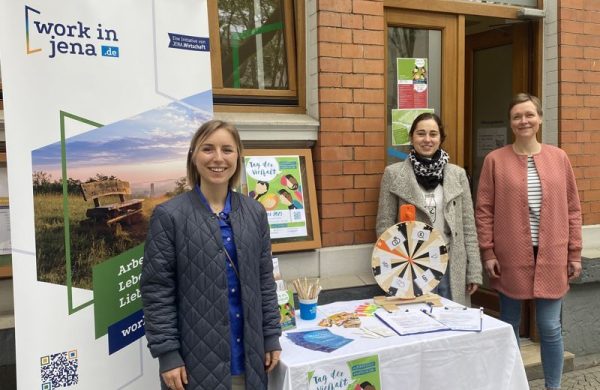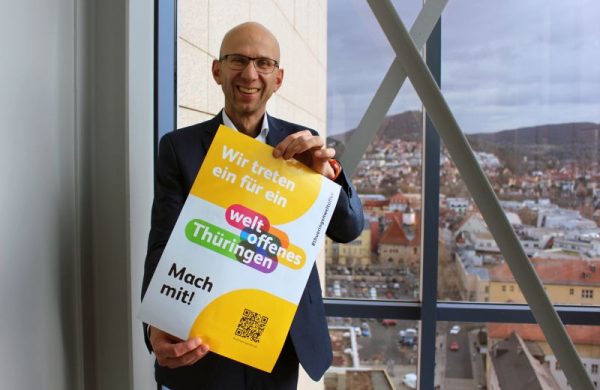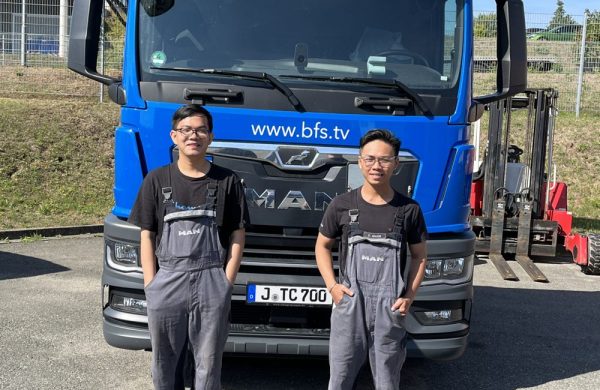
Mark Gresnigt has lived with his spouse in Jena for several years. Originally from the Netherlands, his research work has brought him here. In the blog post, he tells us what he particularly likes about his job, what superstitions Jena’s students have and from where you have the best view of the city.
Tell us a little bit about yourself. Where are you from? And what brought you to Jena?
My name is Mark Gresnigt and I am from the Netherlands. . I have studied Medical Biology in Nijmegen (Nimwegen in German) close to the German Border after which I did my doctoral research at the Radboud University Medical Center. After having worked for seven years on the specific research topic of Immunology of Fungal Infections I was looking for a new challenge. Through several scientific conferences I got to know the Leibniz Institute for Natural Product Research and Infection Biology – Hans Knöll Institute (Leibniz-HKI) as an expertise centre on human fungal pathogens in Europe. After getting in contact with researchers from the Leibniz-HKI, I drafted a project to continue my research in Jena. Supported by a fellowship from the Alexander von Humboldt Stiftung I moved to Jena and started to work as a postdoctoral researcher in the Department of Microbial Pathogenicity Mechanisms headed by Prof. Bernhard Hube at the Leibniz-HKI.
You did not move here alone…
Initially I did… it is not always easy to find positions in the same city and my partner found a position in Dresden. She joined me in Jena after two years when she could start her training as a Psychotherapist.
What are the biggest differences in everyday life between your home and Jena?
In the Netherlands everyone gets around town on their bicycles, though in Jena only a fraction of people get around on bicycles. . I understand that in Jena cycling is a bit more challenging due to differences in elevation, which in the Netherlands is not an issue. Yet, I think that a major factor contributing to this is also the lack of a safe bicycle infrastructure. The shared use of sidewalks simply does not work because of the speed difference between bicycles and pedestrians (in the Netherlands one can get fined when cycling on the sidewalk because of this). I also noticed that when streets get replanned (for example recently in Jena North) little thought is giving about creating a safe way for cyclists (bike paths literally overlapping with tram stops where people are waiting for the tram). I invite the city planners to visit Dutch cities for some inspiration. Sorry to be so negative about this but with the environmental change cycling should be fostered as an environmentally-friendly way of transport.

I would like to see an improved cycling infrastructure for Jena.
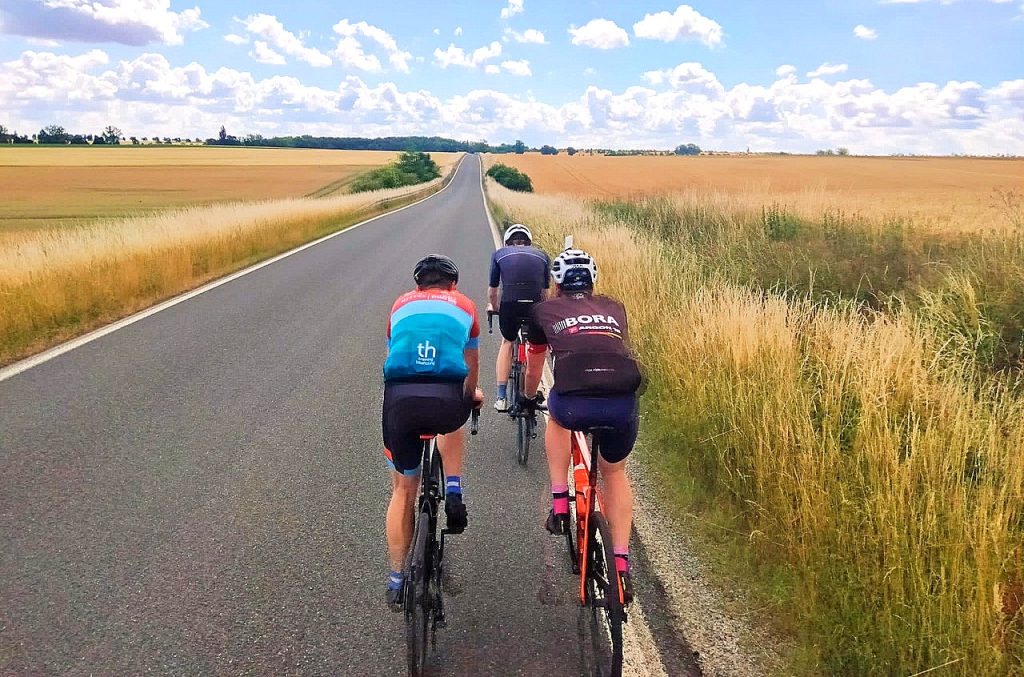
After work we would find you…?
On my bicycle cycling around Jena. After my first year in Jena I got in touch with the very nice self-organised group of cycling enthusiasts “Schleudergang” (or SLDRGNG) who get together twice a week for a tour through the countryside around Jena, whom I now join every week after work. This was and still is a very nice way for me to get integrated in Jena, getting to know the surroundings, and finding friends to go cycling with on the weekends.
You work in a research institute. What do you do? Is there something in particular that is different from other places you have worked at? What is Jena’s research community like?
I work in the Leibniz-HKI. After a two year postdoc period in the Leibniz-HKI, I established my independent Junior Research Group Adaptive Pathogenicity Strategies in 2020 after having received funding from the Deutsche Forschungsgemeinschaft in the Emmy Noether Program. The research of my group focuses on investigating the infection biology of opportunistic pathogenic fungi, fitting to one of the two topics covered within the Leibniz-HKI. These “opportunistic pathogenic fungi” are fungi that are part of our normal community of microorganisms (also called microbiome) that we as humans carry with us (we call them commensals). Other fungi play crucial roles in the environment by decomposing dead plants. Both the environmental and commensal fungi normally very rarely cause disease, unless our beneficial microbial flora is disrupted, and our immune system is compromised.
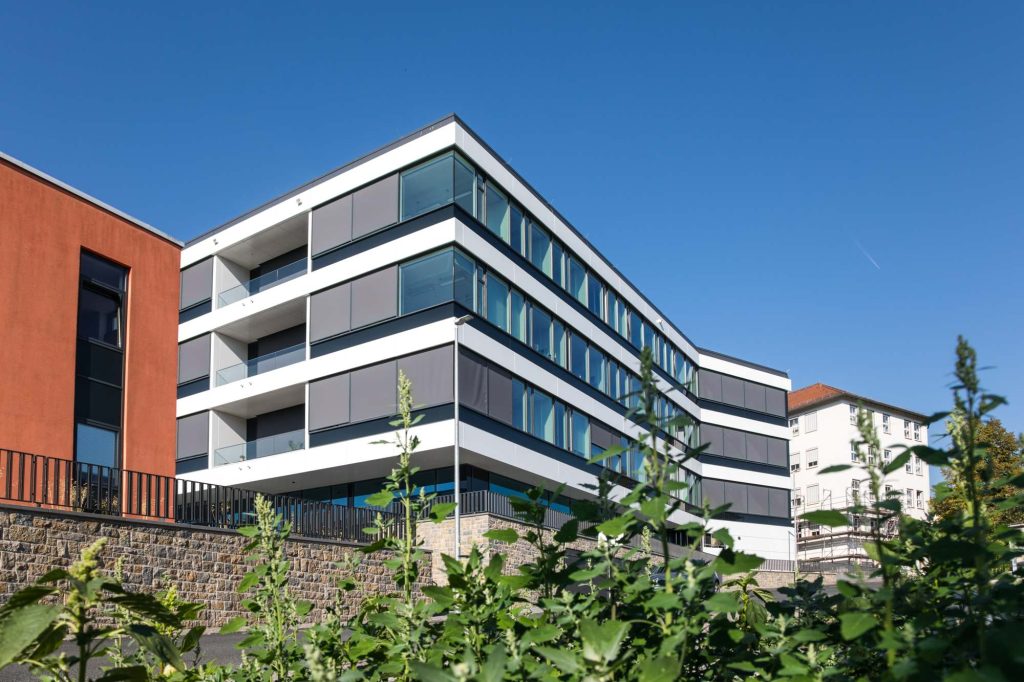
The large number of research institutes in Jena enables strong local cooperation on the various research foci.
Now in the Leibniz-HKI half of the institute focuses on infection biology whereas the other half of the institute focuses on natural product research. Working in an institute with such a critical mass conducting research on the same topic provides the valuable opportunity of many local close collaborations in the research field. Further, the opportunity to collaborate “in house” with systems biologists for microscopy image processing as well as bioinformatical analysis of big “omics” datasets is extremely valuable. Because of the worldwide renowned name of the Leibniz-HKI we, naturally, also have a strong international network and excellent collaborations. Another aspect is that in Jena there are many research institutes with different research focusses. This provides the possibility of strong local collaborations each coming from different expertise focus. For example, we closely collaborate with the Leibniz Institute of Photonic Technology regarding high-resolution microscopy, and we collaborate with the University Hospital Jena on state-of-the art organ-on-chip models that recapitulate human tissues and are considered an important replacement of animal studies in infection biology.

With Jena, I associate beautiful nature, superstitious students and lots of nice open-air bars.
Last but not least, three quick questions:
- If you remember – what was the first thing you noticed in or about Jena?
That Jena is located in a very green valley surrounded by limestone cliffs. In the Netherlands, generally one is able to see a horizon that is far away because it is mostly flat. The second thing is that the city is very young, with many students and families walking through the city centre and parks on sunny days.
- What is typically German or typically Jena for you?
Typically Jena for me are the superstitions and habits applying to students. For example, that it is not smart to walk as a student through the Johannistor, because you will otherwise fail your exam. Or that you have to pass Hanfried at the side of the book, not the sword. Another example is the tossing of the wreath over Hanfried’s sword after a successful doctoral disputation.
- And what is your favourite spot around town?
There are many! One of my favourite spots is the Windknollen, it is nice to go here for a walk in nature regardless of the season. Or one, can walk or cycle to the Fuchsturm to get a very nice view of the city. To have the best views of Jena I like the Saale Horizontale from the Fürstenbrunnen till the Kernberge. After having gone to these spots that require a bit of exercise one can, in summer, go to many of the nice open-air bars like “Strand 22” and “Daheme im Garten”.
Thank you very much for the interesting interview and all the best for you in the future!


